
Cardinals are the most senior members of the clergy of the Catholic Church, being second in precedence only to the Pope. They are appointed to the rank of cardinal in addition to their existing position within the Church. Collectively, they constitute the College of Cardinals, and are appointed for life.

The Basilica of San Sisto Vecchio is one of the over sixty minor basilicas among the churches of Rome, and a titular church since 600 AD. As such, it is connected to the title of a Cardinal priest, currently Antoine Kambanda.
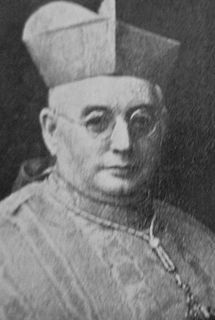
Vincenzo Lapuma was an Italian Cardinal of the Catholic Church. He spent forty years in the Roman Curia and served as prefect of Sacred Congregation for Religious from 1935 until his death. He was raised to the rank of cardinal in 1935.

Tommaso Maria Martinelli was a Cardinal of the Roman Catholic Church who served as Prefect of the Congregation of Rites.
Ottavio Cagiano de Azevedo was an Italian Cardinal of the Roman Catholic Church. He served as Prefect of the Sacred Congregation for Religious from 1913 to 1915, and was elevated to the cardinalate in 1905.
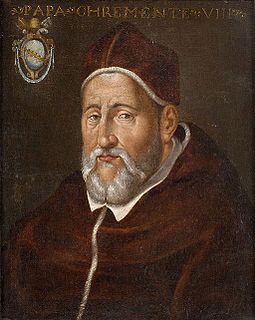
The 1592 papal conclave elected Pope Clement VIII in succession to Pope Innocent IX.

Cinzio Aldobrandini was an Italian cardinal.
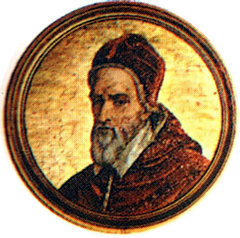
The October to December 1590 papal conclave was the second conclave of 1590, and the one during which Gregory XIV was elected as the successor of Urban VII. This conclave was marked by unprecedented royal interference from Philip II of Spain.

The 1118 papal election saw the election of Pope Gelasius II as the successor of Pope Paschal II who died January 21, 1118, in Rome after an over 18-year pontificate. Gelasius died after only one year in the papacy.

Pope Sixtus V created 33 new cardinals in eight consistories:
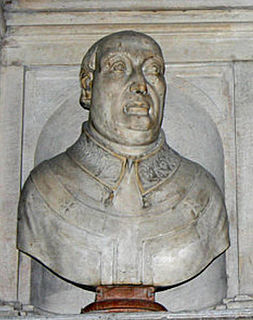
Giovanni Arcimboldi was an Italian Roman Catholic bishop and cardinal.

Peter of Foix the Younger was a French Roman Catholic bishop and cardinal.
Cosma Orsini was an Italian Roman Catholic bishop and cardinal.
Pietro Foscari was an Italian Roman Catholic cardinal.
Giacomo Savelli (1523–1587) was an Italian Roman Catholic cardinal and bishop. He participated in several papal conclaves and held several administrative positions in the Catholic Church during his 48 year career with the Church during the mid 16th century.

Giovanni Garzia Mellini was a Roman Catholic prelate who served as Cardinal-Bishop of Frascati (1629), Cardinal-Priest of San Lorenzo in Lucina (1627–1629), Camerlengo of the Sacred College of Cardinals (1623–1625), Archpriest of the Basilica di Santa Maria Maggiore (1622–1629), Cardinal-Priest of Santi Quattro Coronati (1608–1627), Archbishop of Imola (1607–1611), and Apostolic Nuncio to Spain (1605–1607).
Alessandro Cesarini, iuniore was a Roman Catholic prelate who served as Cardinal-Deacon of Sant'Eustachio (1638–1644), Cardinal-Deacon of Santa Maria in Cosmedin (1637–1638), Bishop of Viterbo e Tuscania (1636–1638), Cardinal-Deacon of Santi Cosma e Damiano (1632–1637), and Cardinal-Deacon of Santa Maria in Domnica (1627–1632).

Ascanio Colonna (1560–1608) was an Italian Cardinal who in his lifetime enjoyed a reputation for eloquence and learning.

The papal conclave of March–April 1605 was convened on the death of Pope Clement VIII and ended with the election of Alessandro Ottaviano de' Medici as Pope Leo XI on 1 April 1605. It was the first of two papal conclaves in 1605, with Leo dying on 27 April 1605, twenty-six days after he was elected, and the conclave to elect his successor being held in May. The conclave saw conflict regarding whether Cesare Baronius should be elected pope, and Philip III of Spain, the Spanish king, excluded both Baronius and the eventually successful candidate, Medici. Philip's exclusion of Medici was announced by Cardinal Ávila after his election to the papacy, and the other cardinals did not view it as valid since Medici had already been elected pope.
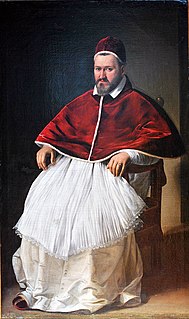
The papal conclave of May 1605 was convened on the death of Pope Leo XI and ended with the election of Camillo Borghese as Pope Paul V on 16 May 1605. It was the second of two papal conclaves in 1605, with Leo dying on 27 April 1605, twenty-six days after he was elected in the March 1605 papal conclave.














